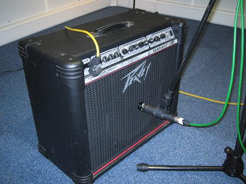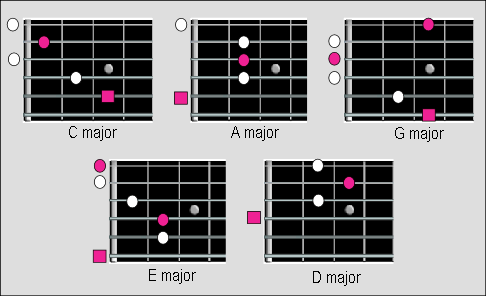It’s true. The buyer’s market is shifting to the World Wide Web. People cannot get enough of shopping and buying products online. The availability and ease of comfort (shopping from one’s home) are clearly two of the strongest selling points for online retailers.
Which brings us to a question we often receive on Guitar Lessons Critic. “Should I buy my new guitar online?”
Purchase Guitars Online: Overview
First, let’s study the benefits of buying the guitar online:
- Wide selection
- Shop from the Convenience of your Home
- Cheaper Prices and Terrific Sales
- Shipped to Your Front Door
Based on the selection, afford-ability, and comfort of online shopping – many beginner guitarists opt to go this route. However, they may miss out on a few opportunities that one would receive if they were to buy the guitar from a local retailer. For example, shopping at an actual retailer provides the following benefits:
- Chance to actually “feel” and “see” the Guitar before Purchasing
- Conversing with a Store Representative who is likely an Expert with Guitars
- Taking home the Guitar the same day you Bought it
- DO NOT have to pay with Credit Card and hand over Personal Information
- Generally offer better Return Policies and Warranties
Purchase Guitars Online: Questions to Ask
Now that you know the pros and cons of purchasing a guitar online you must make a decision. Will you buy from a local retailer or opt to go online? If you still are sold on the Internet, than you must ask yourself the following:
- Is the retailer reputable?
- What is the company’s history? How long have they been in business, what is their feedback rating, where are their headquarters?
- Do you know anyone who has shopped there previously? Were they satisfied with the product? The service?
- What type of payment options do they offer? Anyone who does not utilize PayPal is sketchy at best.
- What is their return policy like? How long is the warranty good for?
- Are they easy to contact? Do they offer a resolution center with 24/7 chat and a valid 1-800 line?
Always try and purchase products from trustworthy online retailers like eBay, Amazon, etc. This is even more important when you desire to buy something used, but it is still not “bulletproof” as scams occur on eBay too.
Purchase Guitars Online: Buyer Feedback
The buyer feedback is quite possibly the most valuable tool online shoppers can use. Feedback on sites like eBay allow users the opportunity to discover a little about the seller’s history. Most general feedback systems display the number of times feedback was left and then a percentage of that feedback is calculated as positive/negative. eBay takes it a step further with the “Power Seller” label.
If you plan to purchase a guitar from a site like eBay, Amazon, etc you should only do business with buyers that have a 95% or higher approval rate with a minimum of 10 reviews (20-30 on the very conservative side). “Power Sellers” do this for a living and have likely sold hundreds if not thousands of products online.
If you plan to buy a guitar from an actual retailer or distributor, do business with companies that search high on Google, Yahoo, etc and have a detailed background with high quality customer service and return policies. Keep in mind that it’s real easy to create a “professional” looking web page, so do your research prior to making any purchase.
Purchase Guitars Online: PayPal
PayPal appears to be the “go-to” escrow system for online transactions and for good reason. The site is very reliable, protecting both your identity and funds. Never just blindly send a check in the mail, hoping that this company will someday return with a new guitar. Make sure that the buyer is verified with the Veri-Sign Secured button at the bottom of the home page. Keep in mind that anyone can copy and paste, so you need to click on the button to ensure it’s accuracy.
For example, when clicking on the Veri-Sign button on the home page of a guitar retailer like GuitarCenter.com, one is transfered to this page.
Purchase Guitars Online: Recommended Retailers
Below is a list of a few music suppliers that we would recommend for your new guitar. Please keep in mind that their are several other reputable companies not listed below.
Guitar Center
Musician’s Friend
Music123
Guitar Trader Online
zZounds
Purchase Guitars Online: Conclusion
Please consider the article as a warning rather than an attempt to steer you away from online shopping. By listing everything that could go wrong or you need to look out for, we hope that this will successfully provide you with a pleasurable experience.
Your guitar is meant to be enjoyed and once you do own one, be sure to check out some of our top rated online guitar courses. These courses will truly take you to the next level and allow your dreams to become a reality.











 http://www.youtube.com/watch?v=bP2REjVaxZg/0.jpg" alt="YouTube Preview Image" />
http://www.youtube.com/watch?v=bP2REjVaxZg/0.jpg" alt="YouTube Preview Image" />
